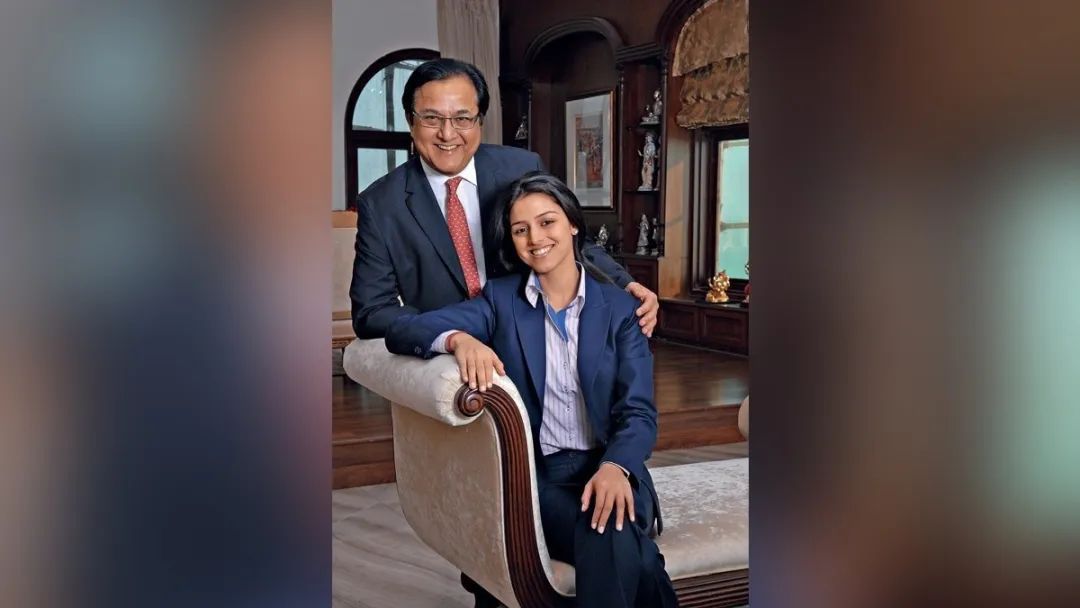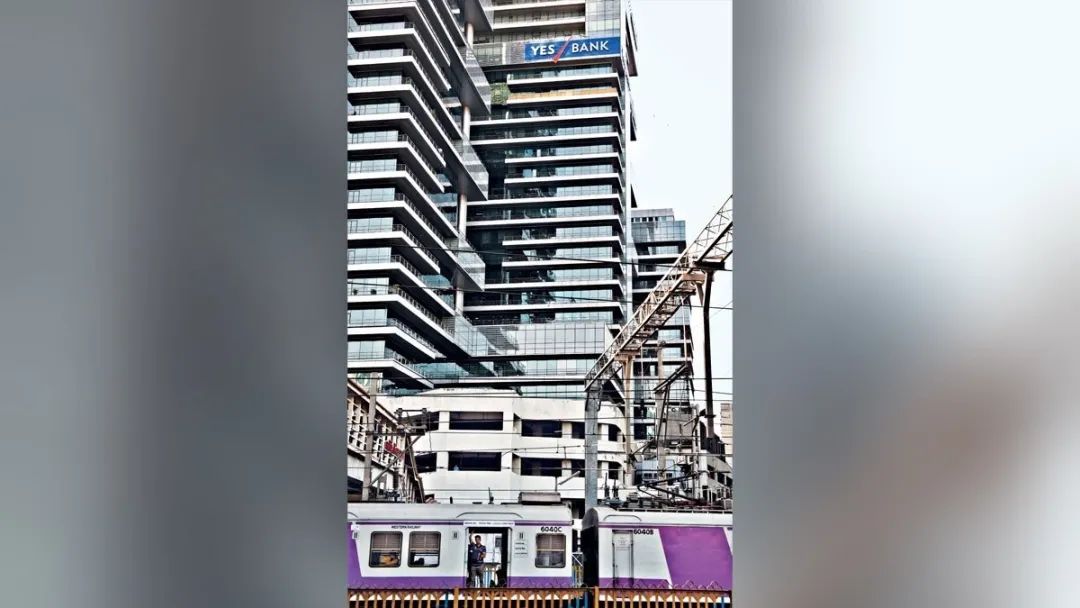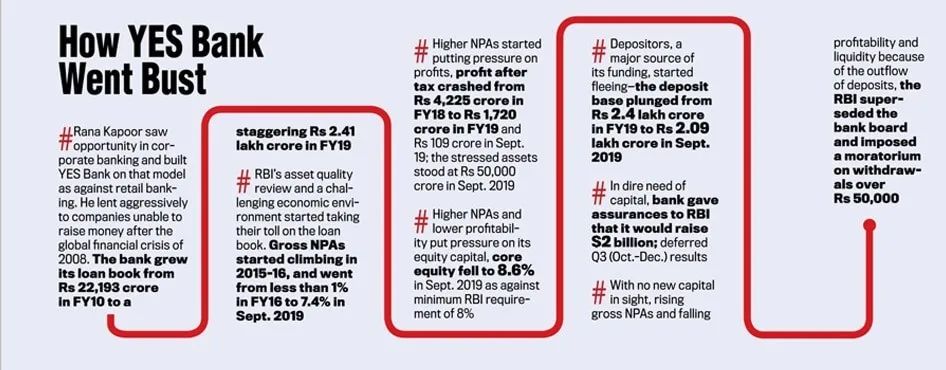The terrorist attacks in Mumbai changed the fate of YES Bank.
Editor’s note: This article comes from the WeChat public account “Zhixiangnet” (ID: passagegroup) .
Author Chen Yanni
Edit | Li Xiaomeng
Typography | Richard
On March 5, YES Bank, India ’s fourth largest private bank, thundered, and the Indian central bank intervened. Subsequently, one of its founders and former CEO Rana Kapoor was arrested by the Indian Law Enforcement Agency (ED) for money laundering, and Rana’s work style and various scandals subsequently surfaced. In addition to Rana’s personal reasons, YES Bank has accumulated a lot of difficulties.
Star Banker
In 2003, the three founders Rana Kapoor, Ashok Kapur and Harkirat Singh obtained licenses from the Bank of India, second Founded YES Bank in the year.
Rana didn’t plan to start a bank at first. Rana joined when Ashok and Harkirat started planning to create YES Bank. Ashok and Rana worked together at Grindlays Bank. They had a good personal relationship and a relationship. The two were wives and sisters, but they did not announce the relationship at the time. Harkirat didn’t know them before, so the basis of trust between the three was not solid. Harkirat left YES Bank within a year, saying Rana and Ashok teamed up against him.
In 2005, YES Bank successfully raised 3.55 billion rupees through the IPO, and the value of each share was 45 rupees. The next step was to find a sustainable business model. Both Rana and Ashok recognized that the state-owned banks’ market share was dwindling, and retail banking was at the time a hot spot. The Industrial Credit Investment Bank of India (ICICI), the Indian Housing Mortgage Corporation (HDFC), and the State Bank of India (SBI), etc. Top banks compete for home loans, car loans and credit card businesses.
Rana once said, “Because we need a lot of money to enter the retail banking business, we have logically chosen corporate banking.” He has worked for 15 years in the investment banking divisions of Bank of America and ANZ Grindlay Bank He also has extensive experience in corporate banking.
Yes Bank from 2008 to 2009The scale of the balance sheet was 229 billion rupees and the total loan amount was 124.03 billion rupees. However, Ashok died unfortunately during the “Mumbai 11.26 terrorist attack”, and the task of bank management fell into the hands of less experienced Rana.
In the next three years, due to the large amount of loans to difficult companies, YES Bank’s accounts have consistently shown non-performing asset divergences (non-performing asset divergences, differences between banks’ reported non-performing assets and non-performing assets assessed by the central bank), There are also issues of corporate governance and compliance. In September 2018, the Bank of India limited Rana’s term to January 2019. Two months later, international rating agency Moody’s downgraded the bank. In March this year, the Bank of India finally intervened and designated the State Bank of India (SBI) as the “White Knight” to rescue YES Bank.
Why did YES Bank develop to such a point? The size of YES Bank’s assets is 3 trillion rupees, and its balance sheet has huge loopholes. The non-performing loan (stressed loan) is expected to exceed Rs 500 crore and the market value of YES Bank has fallen to less than Rs 50 crore. Savings worth Rs 2 trillion are facing redemption difficulties.

The residence of Rana Kapoor and his daughter Rakhee in Mumbai. (Photo: Mandar Deodhar)
Rana has been arrested a few days ago. Before entering jail, an Indian reporter contacted Rana. He said, “I ended my term in January last year, so I don’t know why this situation has developed.” In fact, he must know what happened, and since Ashok died in 2008 Later, as the only founder, Rana has been the general manager and CEO.
So what did he do wrong?
The rise of the Kapoor family
Rana’s grandfather runs the jewelry trade, and his father is a pilot, which gives Rana a good environment to grow up. After graduating from the Frank Anthony Public School in Delhi, he successfully entered the University of Delhi’s well-known Shri Ram Business School (SRCC) and subsequently studied at Rutgers University in the United States.BA.
After returning home, he received many job offers, but he just wanted to join a foreign bank. After working for Bank of America for almost 15 years, he joined ANZ Grindlays Bank in the mid-1990s. After working for several years at ANZ Grindlays Bank, the well-connected Rana persuaded the Dutch-based Rabo Bank to set up a branch in India. As the head of the Indian branch, Rana’s greatest achievement was to advise Tata Tea on the acquisition of British tea giant Tetley, one of the largest cross-border transactions at the time, valued at Rs 18.7 crore, which made Rana the leader Player.

YES Bank Mumbai headquarters. (Photo: Rachit Goswami)
Whether it’s starting a bank or other external affairs, Rana is ambitious. In the 2005-2006 annual report of YES Bank, he addressed shareholders: “We pursue the ultimate integrity and ethics, the highest level of compliance, and the strictest corporate governance practices.”
Yes Bank, however, suffered a major blow in 2008. On November 26, 195 people were killed in a serial terrorist attack in Mumbai, including Ash Bank, co-founder of Yes Bank.
After Ashok’s death, Rana started to manage YES Bank. The bank did not have a fixed chairman. “He has full control of the board,” said an experienced director.
Shareholder director Uttam Agarwal said: “The management has appointed independent directors on the spur of the moment.” Agarwal has left YES Bank in January this year due to corporate governance issues. Others, such as Debjani Ghosh, Subhash Chander Kalia, and Ashok Chawla, also advanced for personal or other reasons left.
In the six years since Ashok’s departure, Rana has set aggressive annual goals that require each new employee to take in a fixed number of demand deposits. A former employee said: “He is a rigorous task setter and has high performance requirements.” 201From 4 years to 2015, the bank’s balance sheet scale expanded to a staggering 13,617 crore, and the loan size reached 755.5 crore. Total non-performing assets also started to rise, but still only 0.41%.
We can compare, Kotak Bank transformed from a non-bank financial company (NBFC) to a bank in 2003. As of 2014-2015, its balance sheet size was 1060.12 crore and the total loan amount was R. 661.61 crore .

YES Bank crash process, source: India Today
At the same time, Rana began to shape herself as an industry leader and interacted closely with politicians. In 2010 he spent Rs 20 crore to buy MF Hussein’s Rajiv Gandhi (Prime Minister of India, Vadara is his daughter) from Priyanka Gandhi-Vadra The portrait is a good example. In July 2013, he took over the post of President of the Indian Federation of Chambers of Commerce and Industry (Assocham), during which he stated that Indian voters have marginalized the so-called caste, “sending a strong message that India cannot be narrow “It has hurt the economy and the country’s image.” But when the central government changed in May 2014, Rana quickly changed her position and publicly congratulated the new prime minister, Narendra Modi.
The business alliance brings Rana closer to industry and government. Many insiders see him as a risk bearer, and in fact Rana doesn’t mind lending money to troubled companies as long as he can get slightly higher interest and good collateral.
“Once the transaction is initiated, bank employees will conduct due diligence, but these loans have never been rejected because of the risks involved,” said a person familiar with the matter. Many over-debt companies such as Reliance ADAG Group, Dewan Real Estate Financial Corporation (DHFL), Indian Housing Development and Infrastructure Limited (HDIL), ESSEL Group, India’s largest coffee chain Cafe Coffee Day and Jet Airways all came to him for loans .
Reliance ADAG Group, the largest borrower, responded that it will plan to repay all borrowings through the monetization of various assets.